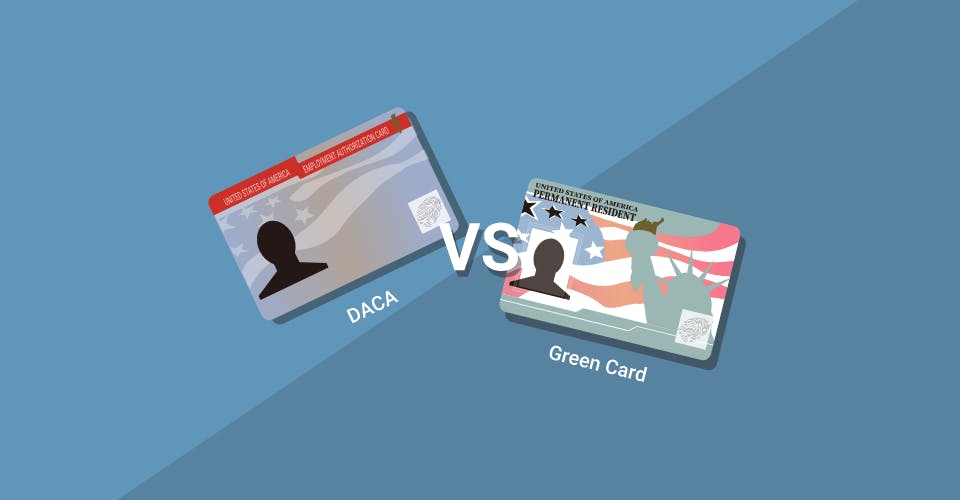DACA, or the Deferred Action for Childhood Arrivals is a status that is not the equivalent of permanent legal residence in the United States. However, it does protect recipients from being deported, or from being placed in removal proceedings. It was initiated by the Obama Administration to protect undocumented immigrants from being deported in the United States, but also the ability of these “dreamers” to have a future in the United States by being able to keep their status and reapply a year in advance to have their DACA status renewed.
However, there are limitations to DACA that put recipients in a sort of “limbo” phase of their life where they are not green card holders or U.S. citizens, yet fit into the fabric of American society. From an immigration standpoint as well as a legal one, DACA is also not a type of humanitarian condition, like TPS (Temporary Protected Status) that allows applicants to file an I-485 application or be granted certain special travel documents. This creates severe problems over the lifetimes of DACA grantees.
Additionally, here are some of the differences between DACA recipients and U.S. green card holders:
1. Ineligible for certain private marketplace healthcare plans that would be granted to LPRs and thus affordable healthcare options.
2. Unable to receive certain federal benefits like food stamps or college financial aid
3. Unable to apply for a drivers license in some states while in almost every state green card holders can apply for a permit
4. The inability to travel outside of the U.S. for a period of 6 months or less (the rights of a green card holder)
5. Needing to file for advanced parole, and risking the possibility of a denial of re-entrance to the U.S. at Customs
Why DACA Recipients Cannot Receive a Family-Based Green Card
The biggest problem that such recipients face when trying to become green card holders lies in the application process and the I-130 petition. The petitioner, in this form, needs to enter select information about themselves, but also the beneficiary. Specifically, in Part 4, the petitioner has to answer Questions 45-50, which all deal with the DACA recipients Entry to the U.S. In order to be admissible to the United States, an applicant must have legal entrance records, i.e. not having been brought to the United States as a child illegally with the help of parents/guardians. Such applicants will also not have a USCIS online case number either.
This is not exactly what the Biden Administration is trying to change, but should consider if they want to bridge the gap between DACA recipients and eventual green card holders. Few DACA recipients (compared to their total population in the United States—approximately 640,000) have received any green cards and most have done it through marrying a U.S. citizen and hiring an immigration attorney for their case.
Under a Biden Administration, new questions might be considered on the I-485 application that waive the requirement of needing a lawful entry if the applicant has already received DACA status. The problem, however, that this creates is that the Department of Homeland Security will have to issue more green cards per fiscal year (FY) in the family-based categories.
Employment-Based Green Cards
In addition, DACA recipients run into the same issue with employment-based green cards, or pursuing an employment visa that would lead to such an outcome. This is based on the same admissibility requirement of legal entry outlined in the INA.
However, DACA recipients are granted an EAD Card—Employee Authorization Document, or sometimes called work permit, and do have a social security number while on DACA status. The main difference between a U.S. green card holder who is working in the United States is that they also have options beyond their LPR status, such as the eventual path to citizenship. This is again a problem for dreamers due to the fact that their only option as of right now is to apply for a 2-year renewal to their same status.














